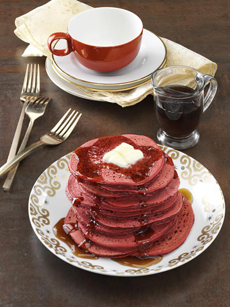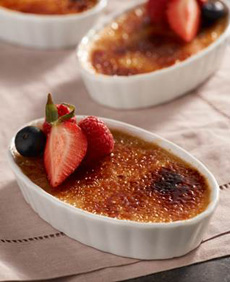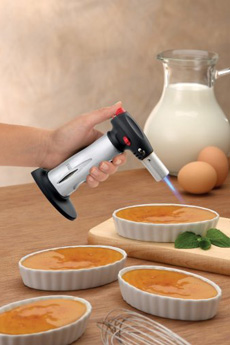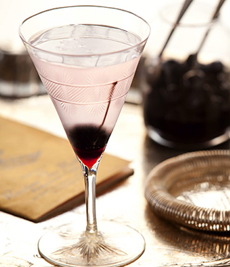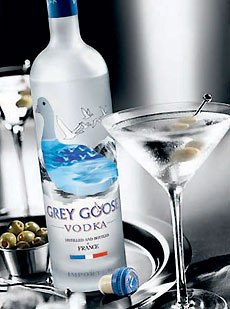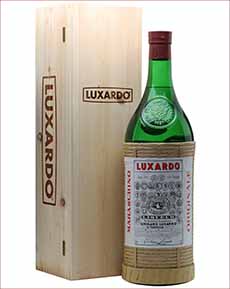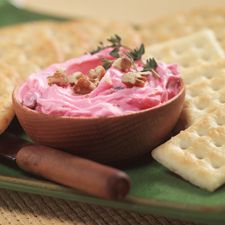February 11th is National Peppermint Patty Day. Whip up a batch today, and make extras to hand out on Valentine’s Day. (For Valentine patties, top with heart-shaped sprinkles or Conversation Hearts.)
IS IT PATTY OR PATTIE & THE HISTORY OF PEPPERMINT PATTIES
Whether it’s candy, meat or veggies, to be perfectly correct, the spelling is patty. Patties is the plural form, so many folks assumed the singular to be pattie.
The word first appeared in English around 1700-1710, derived from the French pâté (paste in English), a mix of finely-ground ingredients. Pasta is the Italian word for paste; and in modern French cuisine, pâté refers to a meat loaf as well as the more finely ground goose or duck liver pâté.
Bonbons—creamy flavored centers enrobed in chocolate—appeared in the 19th century. However, the peppermint versions of the time were gummy.
Henry C. Kessler of the York Cone Company in York, Pennsylvania set out to make a better peppermint center. In 1940 he developed a center that was firm. He called it the York Peppermint Pattie (alas, not the correct spelling, which is patty).
Other companies followed suit, most notably James O. Welch, a candymaker in Cambridge Massachusetts who had created Milk Duds, Sugar Babies and Sugar Daddies. In 1949 he introduced Junior Mints, a small, round, bite-size version.
Today the York brand is owned by Hershey and produces the Peppermint Patties in Monterrey, Mexico. Junior Mints are owned by Nabisco Brands, and still are produced in Cambridge [source].
So you could run out and get a York Peppermint Pattie or a box of Junior Mints (we far prefer the flavor of York).
Or, you could spend 40 minutes of prep time making your own (plus 9 hours of drying time).
And if you’re not in a candy mood, how about a Peppermint Patty Martini?
|
|
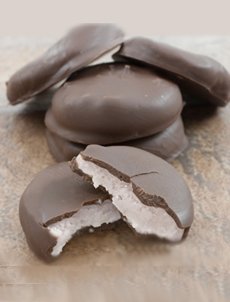
[1] Homemade peppermint patties (photo © Safe Eggs).
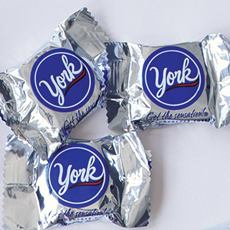
[2] York Peppermint Pattie minis (photo © The Hershey Company).
|
